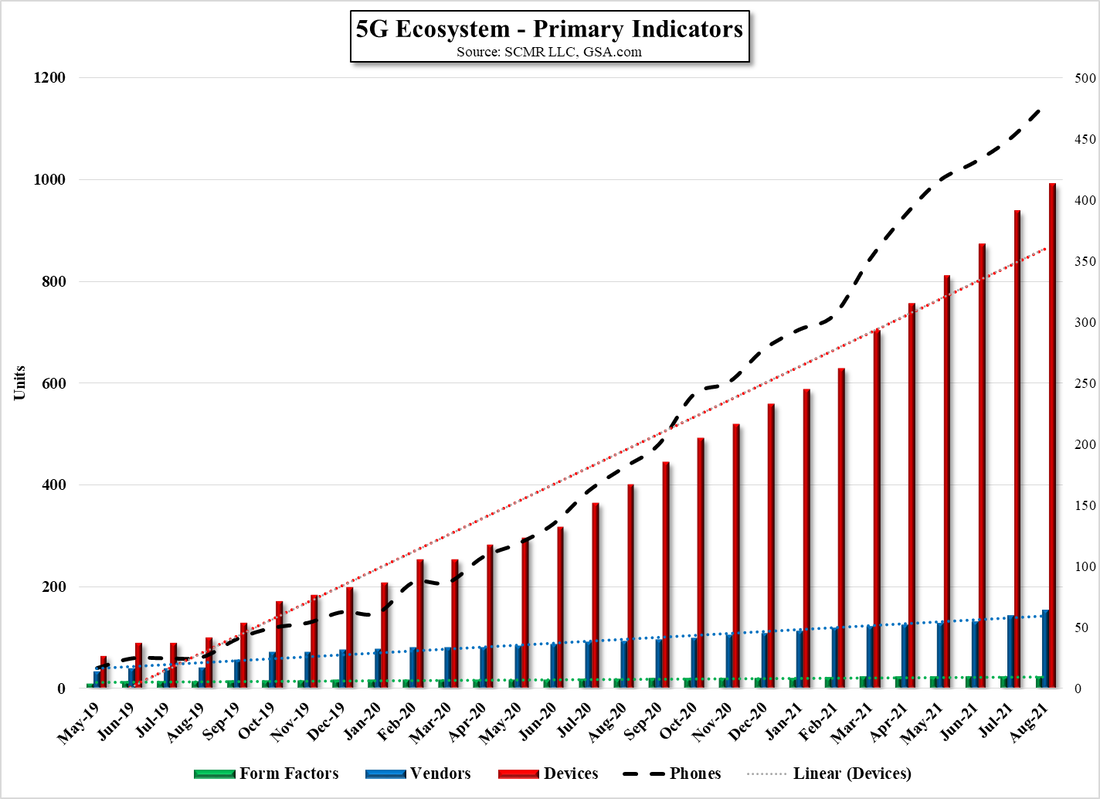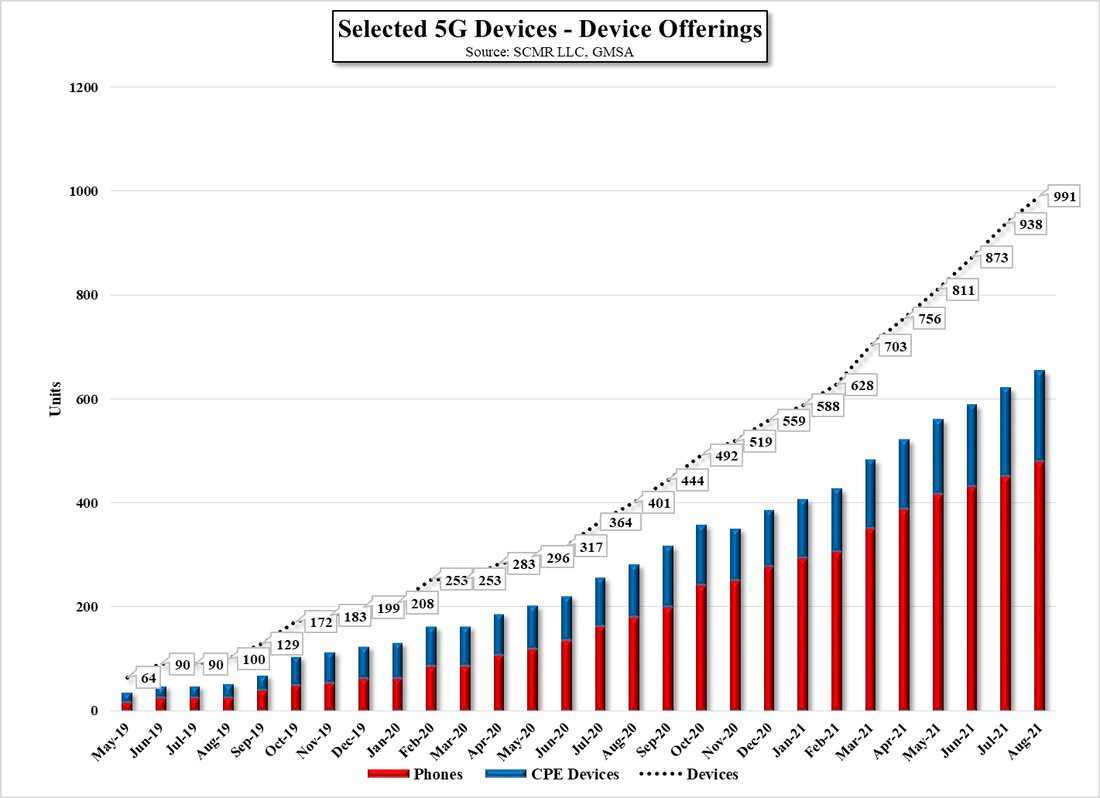The Flavor of 5G
To begin with, as we have noted in the past, 5G performance is based on spectrum, which tends to be defined as three bands, with a number of gradations, but one of the most important characteristics of 5G is its coverage (area) is determined by the spectrum band, with lower frequencies covering a wider area, while higher frequency bands cover a smaller area. Logic holds that the smart move would be to deploy low band spectrum to reduce the number of base stations needed for maximum coverage, however while the lower bands offer greater coverage, they operate at slower speeds, and one of the key selling points for 5G is its speed improvement over 4G. This leads carriers to spend much capital in the lower bands, especially in the early years of deployment, with the future intent of adding higher band capacity after coverage of major population areas has been completed.
While this is a relatively successful strategy from the carriers standpoint, and certainly the most cost effective, it has a tendency to short-sell just the 5G characteristics that consumers want, higher speeds and low latency, and given the ever declining premiums carriers are able to charge for premium services, carriers will find that the competition will continue to push them toward higher 5G frequency bands to provide increasingly higher 5G connection speeds and lower latency, particularly for business customers. This leave carriers in the unenviable position of having to continually build out more base stations in order to maintain coverage at higher frequencies.
There is a solution however, and that is the use of what are called small cell base stations (about the size of a pizza box), as opposed to the ones we are more used to seeing on towers, which are called macro cell base stations (50 to 200 ft. high)(, and femto cells, a cell with the footprint of a paperback book. While expensive macro cells give carriers early coverage, small cells allow higher frequencies to be used, increasing speed and reducing latency and can be easily situated on existing structures, such as light poles as we have noted previously. At a cost of less than a macro cell, small cells can be deployed over the same area, enabling the carrier to offer subscribers higher speeds and lower latency, but we note that small cells need to connect to the core network through a dedicated link, which could be copper or fiber. This can limit their ability to be located where coverage is needed and potentially increasing the operating cost of the small cell, but a number of other solutions exist for connecting small cells to the network core.
Wireless small cell backhaul options that allow small cells to communicate with the macro cell with the option to communicate to other small cells if that communication link is affected by weather. This can be accomplished using Sub6, microwave, mmWave (5G high frequency) and satellite spectrum, each with its own positives, negatives, and best case applications[1] , while femtocells, which would typically be used for local applications such as malls, hotels, offices or homes, connect back through the internet, essentially sharing bandwidth and creating what are small ‘private networks’ rather than small cell networks, which are public. Think of femto cells are wireless routers with limited coverage while small cells are more akin to roof top cell installations seen in towns and cities that create local hotspots.
Despite the relative immaturity of the 5G small cell market, the rapid increases seen in data traffic will push carriers to upgrade networks to 5G, and with a relatively limited number of potential macro cell sites and available 5G spectrum, small cell carrier deployments are expected to grow rapidly starting in late 2024 and 2025, while their use in industry for private networks has already begun, particularly as such locations already have wired backhaul options available, but such predictions have been made before, with small cell deployment of 4m small cell sites by 2026 predicted back in 2020. Those numbers do not now look realistic but encouraging signs from US carriers, particularly Verizon (VZ), who is building out its mmWave Ultra-Wideband network using small cell technology, recently noting that it had added 15,000 additional 5G mmWave small cells on line, putting it ahead of its annual goal. Small cell equipment suppliers are Samsung (005930.KS), Huawei (pvt), NEC (6701.JP), ZTE (763.HK), Ericsson (ERIC), Nokia (NOK), Airspan (MIMO), Commscope (COMM), and Comba Telecom (2342.HK), and a variety of smaller suppliers and component producers.
[1] Siddique, Uzma, et al. “Wireless Backhauling of 5G Small Cells: Challenges and Solution Approaches.” IEEE Wireless Communications, vol. 22, no. 5, 2015, pp. 22–31., https://doi.org/10.1109/mwc.2015.7306534.


 RSS Feed
RSS Feed